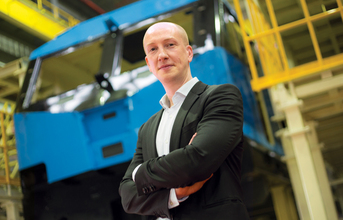
In these circumstances, India is an important market for the company. Speaking on it, Beaudoin informs, "Alstom identifies India as one of the fastest growing markets that offers immense opportunities in urban transport with the government's push towards modernisation of infrastructure and making cities smarter and efficient. For Alstom, India is our second largest hub for innovation and manufacturing with three production facilities and 3,000 employees across its offices in the country. Our growth plans here include aiding in upgradation and modernisation of Indian Railways, freight, focus on the urban mobility solutions for the future, ease of doing business and building India as a global powerhouse for the business. In addition to this, our key focus area will be to align with government's long term plans in the urban infrastructure sector."
While elaborating further, he projects that over the next five years, the Indian government will modernise and expand the country's huge but ageing rail network with investments of $137bn.
According to Beaudoin, in five years passenger capacity will increase to 30m a day. "Also, track length will increase by a fifth to 138,000 km and freight capacity will have to be raised by half to 1.5bn tonnes a year in this period. Also, corridors could be increased from 110-130kph to 160-200kph or higher (if High speed rails are successfully introduced) allowing inter-city travel to be lightning fast," he projects. "These are all opportunities for Alstom in terms of business growth and innovation. Several initiatives of Ministry of Railways, notably focus on signalling upgradation, upgradation of rolling stock and electrification are likely to have a positive impact for Alstom," he asserts.
While in the conversation, Beaudoin also touched upon business environment in the country. "The economic reform - GST is projected to have a positive impact on the business growth. It will help simplify and clean up some of the outdated taxation policies, giving businesses a fillip and most importantly, transform India into a single market. Businesses aligned to these programmes will find greater value in the Indian business landscape."
This right business sentiment culminates into Alstom recognising India as a leading center for APAC projects and as a design and manufacturing centre to projects worldwide. "As we scale up rapidly in the country, we plan to reach 1 million engineering hours in India by 2020 by introducing state-ofthe-art technology and best engineering practices," he reveals.
Continuing further, he says, "As for the APAC market, I think we will see rapid innovation and development to keep up with the growing economic development in this region. We at Alstom
will dedicatedly innovate to provide solutions to solve mobility problems tailor-made to the challenges and specific needs of each area. To give you an example, our tram-bus APTIS will be undergoing a trial run in Singapore soon after having won support in Paris. This is a solution that is sustainable, clean and solves the mobility problems of the area."
In order to serve its customers better, Alstom and Siemens have recently joined hands. Speaking on the benefits that would be passed on to global markets, Beaudoin concludes by saying, "The combination of Alstom and Siemens's Mobility Business in the transport industry will result in a global entity with strong positions in all market segments. Both businesses have strong geographic complementarity worldwide in industrial footprint and customer base in each region. This deal strengthens financial capacity to boost innovation and propose best-in-class digital mobility solutions to increase differentiation vis-a-vis all competitors. Large scale standardisation and mutualisation of best practices to offer more competitive solutions to customers will be out primary focus across regions."
END



























